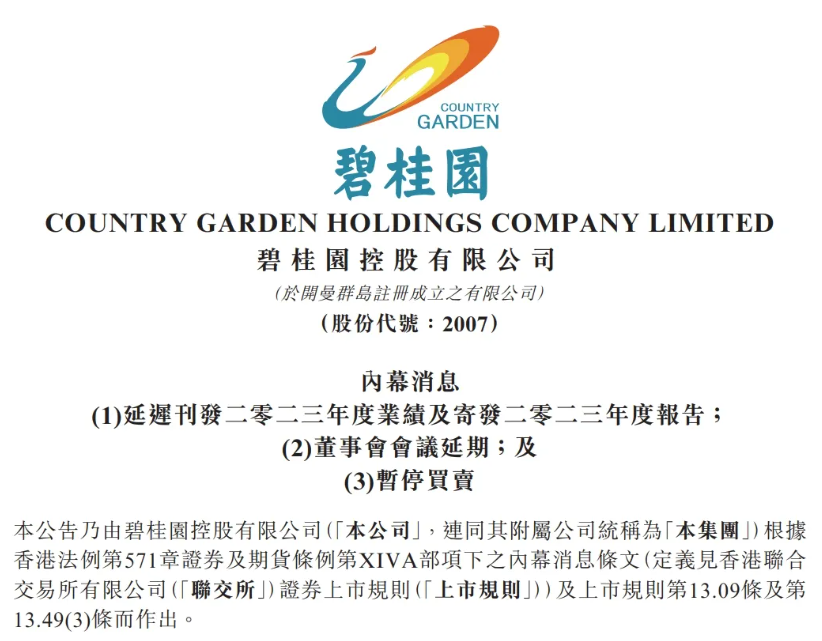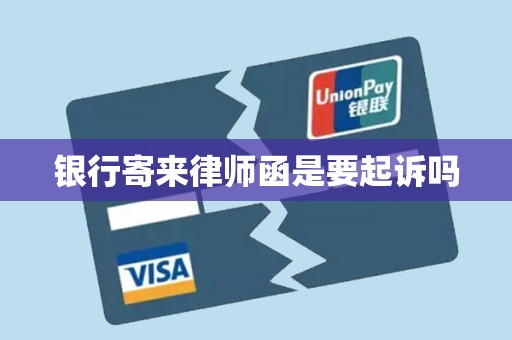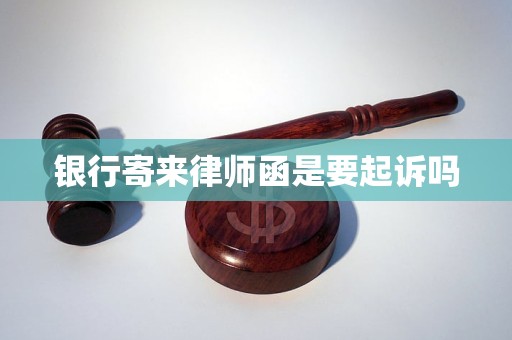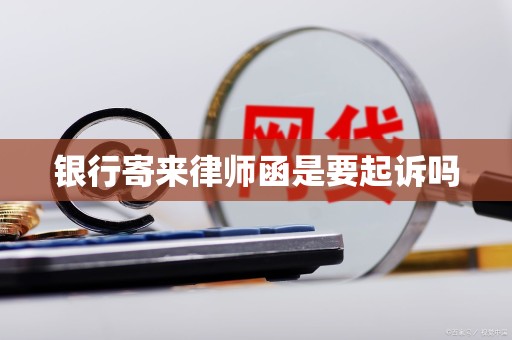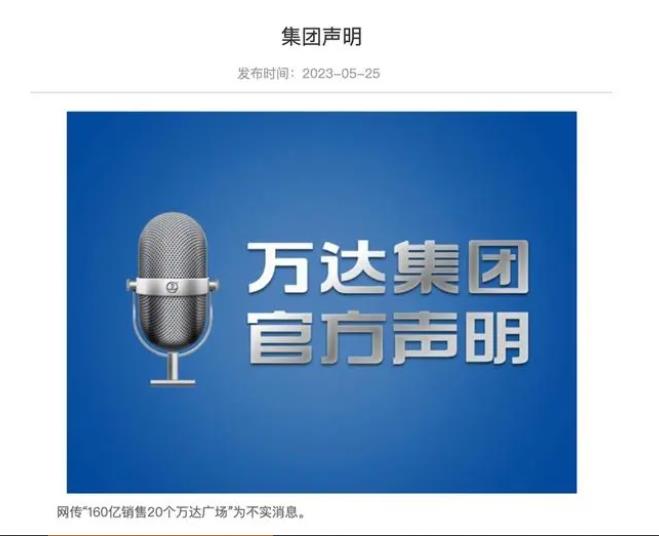Paying members can not only improve the ARPU and retention of the market, but also every addition may mean the loss of paying members of similar competing products, which is particularly important in the business competition period.

In the trite AARRR model, the membership system is the most common operation means at the active, retained and income ends, and it has two types:
Paid membership system: purchase high-value and differentiated rights and interests by paying.
Example: 88VIP, JD.COM PLUS, Tencent Video VIP, and Zhihu Salt Selection Member.
Growing membership system: through the accumulation brought about by specific user behavior, we can obtain grade growth and differentiated rights (generally low value).
Example: Member of Public Comment, Member of Didi Orange, and Member of Alipay.
The core goal of the membership system is to increase the proportion of paying users, user life cycle and ARPU.At the level of user value, it is reflected in the improvement of LTV, and at the level of user income, it is reflected in the improvement of NDR, which finally pushes ARR to a higher level.
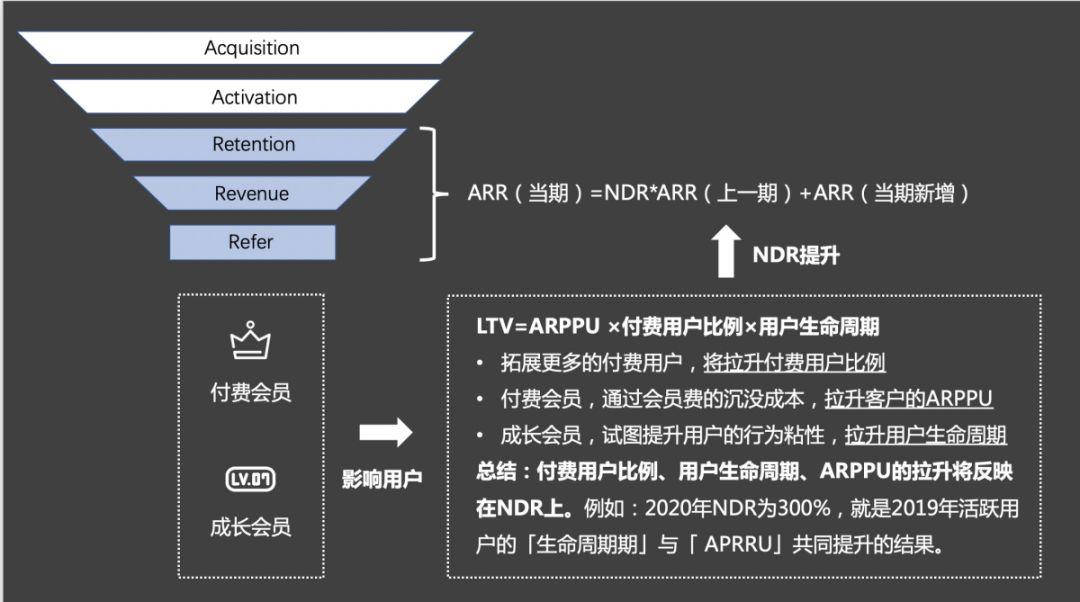
Figure 1: Target derivation of membership system
- ARR(Annual Recurring Revenue) means annual recurring income.
- NDR(Net Dollar Retention)= the ARR of the user group in this period ÷ the ARR of the user group in the last period.
The formula is too abstract, for example:
Ever since Eric got the VIP for listening to books, he has been worried about the membership fee of 365 yuan every day, absorbing the anxiety handed to him by teacher Luo Zhenyu. Two weeks later, he was not only satisfied with listening to books, but also bought popular courses such as "Thirty Lectures on Liang Ning’s Growth Thinking" and "Xue Zhaofeng’s Economics Course". For the next year, Eric was immersed in the knowledge he got every day until his performance reached 3.25.
This year, Eric spent a total of 851 yuan. If he didn’t buy VIP listening books, his spending on the platform he got should not exceed that of 150 yuan. Not only that, he stopped subscribing to the Wu Xiaobo Channel.
Summary: Paying members can not only improve the ARPU and retention of the market, but also each increase may mean the loss of paying members of similar competing products, which is particularly important in the business competition period (since the launch of 88VIP, the annual fee of JD.COM PLUS has been reduced from 198 yuan to 99 yuan).
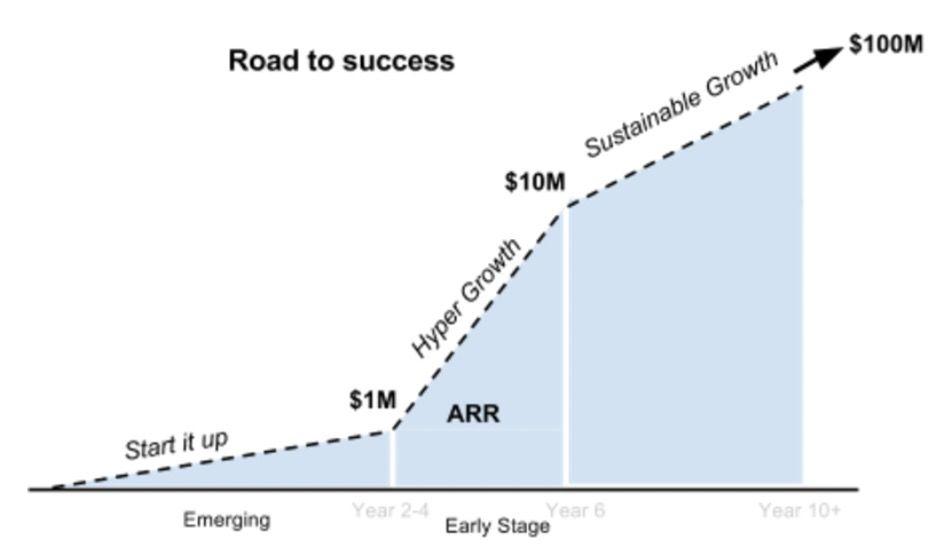
Figure 2: How to get on the road to success?
(1) Motivation and effectiveness
1) paid membership system
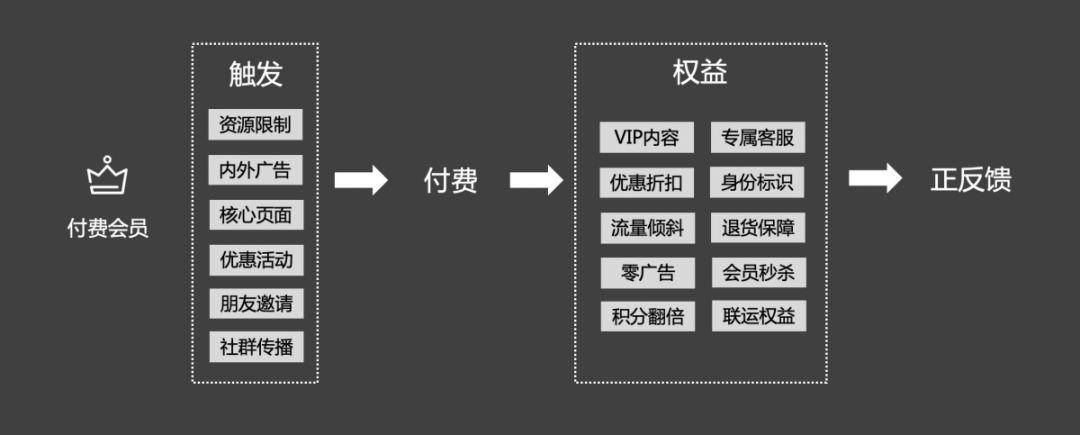
Figure 3: Positive feedback from paying members
A good paid membership system, users’ utility demands are very clear:
- More flow tilt.Example: Top function of Zhihu members.
- Concessions visible to the naked eye.Example: JD.COM PLUS’s freight coupon, a red envelope for hungry.
- Exclusive VIP resources.Example: Youku Zero Advertising Experience, Mango TV "Singer" to watch first, VSCO member filter.
Low-frequency and inefficient rights and interests such as "member logo" and "exclusive customer service" are mostly just to make up the number.Generally speaking, the implementation cost of paying members to obtain rights and interests is low (just pay, no need for behavior accumulation), and the services paid for are usually services with high effectiveness.
With the development of domestic users’ payment habits and the strengthening of piracy crackdown (increasing the "search cost" of using pirated resources), paid membership has become the core operation project of many Internet products.
On August 8, 2018, Ali launched the 88VIP program, trying to open up Alibaba’s ecology through this "one card", including shopping, local life and big entertainment, which was called Ali’s "No.1 Project".
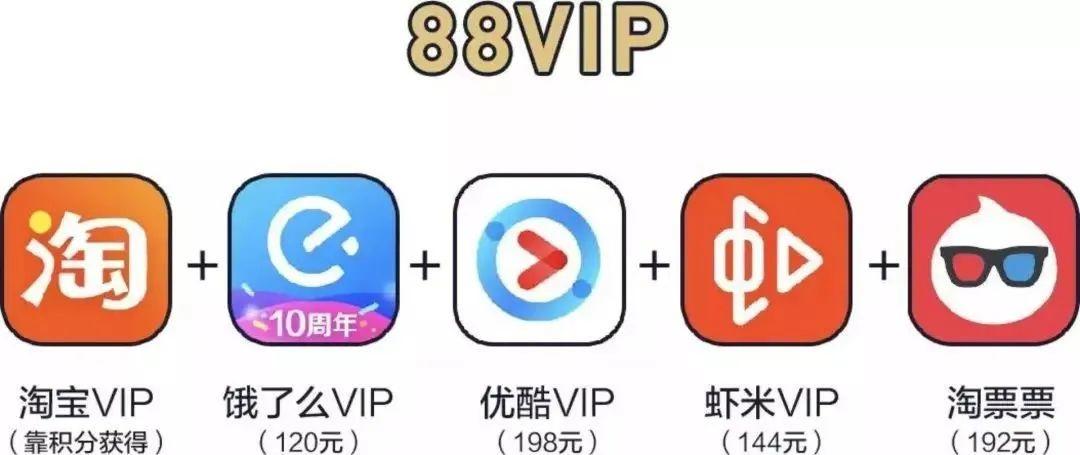
Figure 4: 88 VIP
2) grow the membership system
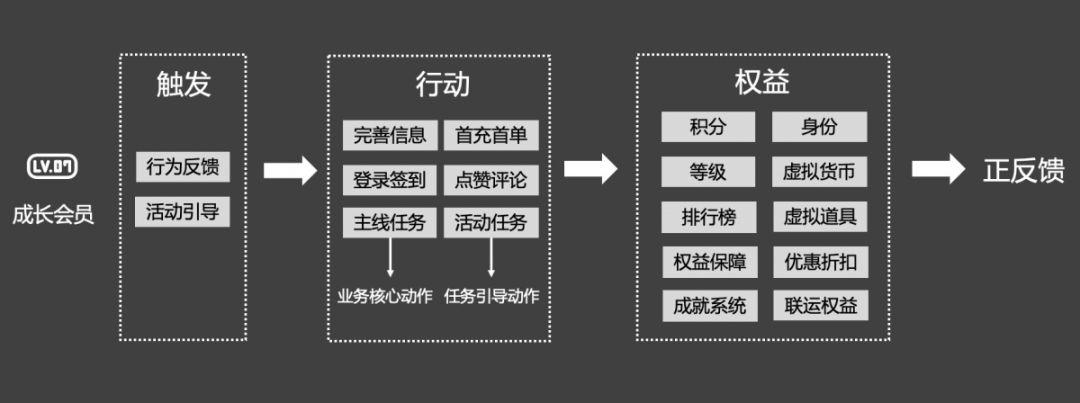
Figure 5: Positive feedback from growing members
For most Internet products, the "growing membership system" has relatively low influence on user behavior for two reasons:
The growth system is a global operating system, and there is no income. If the subsidy rate is too high, it will increase the operating cost with the scale growth.Example: In 2018, Didi points can also be redeemed for express tickets, but now they can only be redeemed for luxury car tickets.
Or because it is free, the positive feedback of the growth system is difficult to be high-frequency and infinite.It is more suitable to appear in the form of "aha moment" with medium and low frequency. For example:
- Didi Chuxing: Senior members will have higher upgrade probability and more privilege of quick response during peak hours.
- Starbucks: Gold star members can exchange a cup of prepared decoction pieces for every 9 stars (full of 460 yuan).
- Alipay: Diamond members can get 3 fast boarding tickets every month.
To sum up, compared with paid members, in order to obtain "utility" in the growing membership system, users’ implementation cost is higher and the utility of rights and interests is much lower.This is destined that the growing membership can only be used as a supplementary means of operation in most cases, with the integral system, reasonably consume the accumulated value, and subsidize the highly active/valuable users in a targeted manner.
(2) Starbucks: the mixed practice of paying and growing membership.
Star Card is a membership system that integrates "paying members" and "growing members";
1) Is there a discount if you pay?
98 yuan’s Star Card does not enjoy the rights and interests as Tencent Video VIP does.Instead, you get "6 consumption coupons+straight jade star members" by pre-depositing cash.
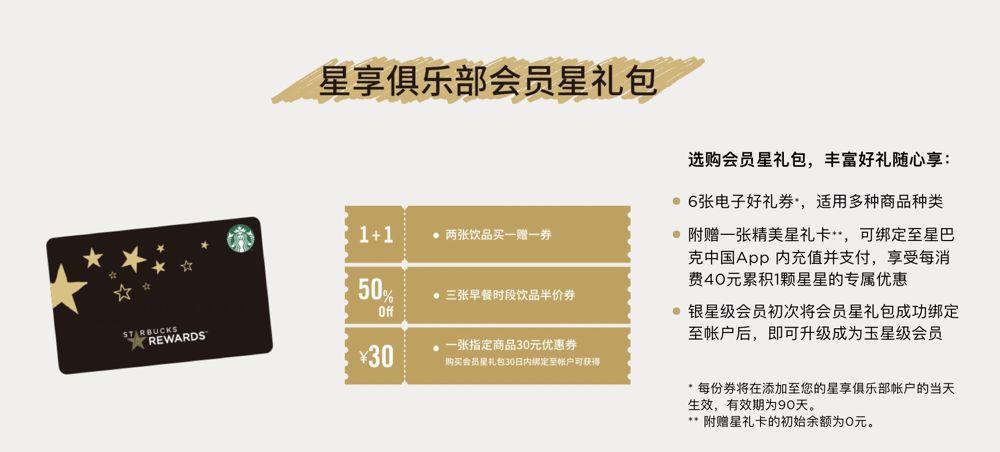
Figure 6: Starbucks Star Card
How much money can users save?
- Two buy one get one free. Take four lattes as an example, 32*2=64 yuan.
- 1 coupon for 30 yuan, with minimum consumption of 160 yuan and actual consumption of 130 yuan after deduction.
- 3 half-price coupons for breakfast, taking the consumption as an example (16÷2)*3=24 yuan.
Under the condition that all coupons are used.Total consumption =218 yuan +98 yuan =316 yuan.
In the case of non-member purchase,Total consumption =32*4+160+48=336 yuan.
Discount rate = 20 ÷ 336 = 5.95% (excuse …).
This routine is really unacceptable, so … did Starbucks make a profit?
A: Of course.

Figure 7: "Current portion of stored-value card liabilities and deferred revenue" is in millions. Source: Starbucks FY 2018 Annual Report.
Starbucks has about $1.6 billion in "‘stored value card liabilities’", that is, Star Card.That is to say, about 6% of the company’s liabilities are actually zero-interest loans lent by coffee addicts to their suppliers.
-Negative Interest Rate Loan: Starbucks’ Monetary Miracle
2) the cycle of growth
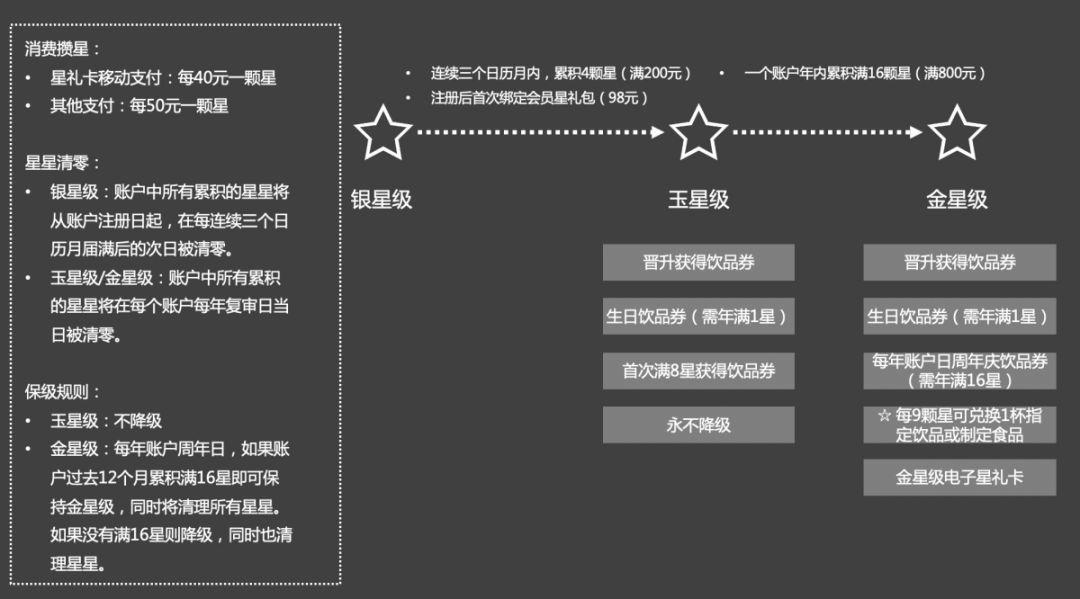
Figure 8: Starbucks growth system
As a classic "growing membership system", Star Card has its design core:
Definition of effective behavior:Consumption; For the Star Gift Card (stored value card), the growth and accumulation have been accelerated.Guide users to store values.
Design of grades and rights:
- The grades are only divided into three levels,The cognitive cost of users is low.
- The rights and interests can be summarized as: upgrade reward, relegation reward, and advanced user exchange right (9 stars for drinks).Among them, the promotion and relegation rewards are triggered every year, with long subsidy period and low cost pressure.
Rules for promotion/relegation:
- Jade star can buy "star gift package" and avoid relegation forever.
- Jade stars are upgraded to gold stars after accumulating 16 stars, and they can be relegated after keeping 16 stars in an account for a year (with the stars cleared).However, the exchange of "9 stars" for drinks by Venus users will conflict with the relegation rule of 16 stars/year, which will raise the cost for consumers to continuously obtain preferential treatment.
Because this article focuses on the introduction of the paid membership system and the detailed analysis of the growing membership system, it will be introduced in detail in the next article.
(1) Grab the person who paid the bill.
At present, the market is facing the dilemma of incremental depletion, and the competitive strategy has changed from free exchange of traffic in the past to payment for quality.A battle for high-value users.
As mentioned above, the competition for paying users is forced by the pressure of zero-sum game, and it is difficult for users to pay for similar services.But users who are willing to pay are mostly high-value users.
- According to the data provided by Ali, 88VIP members buy twice as many guest lists as ordinary users, and the purchase width is six times that of ordinary users.
- According to the data released by JD.COM, 65% of PLUS members are young people under the age of 35, nearly 60% of them live in first-and second-tier cities, 89% of them are people with bachelor degree or above, and 98% of them are loyal users.
From the perspective of the platform, paid members not only seize the "behavioral attention" of high-value users, but also provide effective user labels for service providers (merchants) to facilitate accurate marketing and improve business efficiency.
Under the trend of escalating consumption of snacks, three squirrels want to promote high-end goods, but they have never found an accurate crowd. A high-end canned snack for women hangs in the store and sells only a few hundred copies a month. After pushing to 88VIP, it sold 2000 orders a day.
(2) Psychological analysis of users
Why is paying membership so effective? becauseUsers are"Hate loss".
Relatively free access, users are more sensitive to loss, especially the annual membership with high customer unit price, which is a big loss if they buy it without using it. Therefore, once the payment is made, the user’s behavior will naturally focus on the services related to the members, which also determines that it is very important to pull the new hook design (which will be introduced in the next chapter).
It is worth noting that "loss aversion" and "risk aversion" are different:"Risk aversion" means that users need more compensation under the same risk.
For example:
Option 1: If the coin is face up, the participant gets the 100 yuan; If the back is up, there is nothing.
Option 2: Don’t participate in the game and get the 50 yuan directly.
The two options are weighted according to the probability, and the expected returns are the same:
Option 1: 100 * 0.5+ 0 * 0.5 = 50 yuan.
Option 2: Get 50 yuan directly.
- Risk-averse people often choose two and take 50 yuan directly.
- Risk-averse people will choose one and gamble.
- It is all the same for those who are risk neutral to choose one or two.
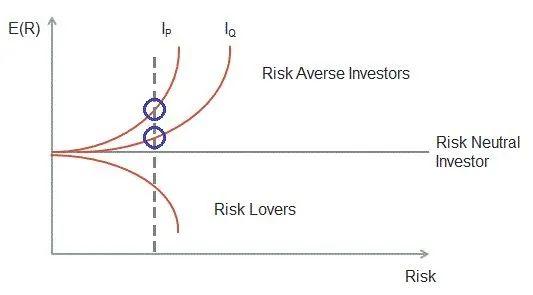
Figure 9: Investor P (IP) is more risk averse than Investor Q(Iq).
The application of risk preference is often used in the operation practice of integral system, such as lottery, turntable and so on.
"Loss aversion": Comparison between gain and loss
Get the experiment:
Option one: you will definitely get $900.
Option 2: There is an 80% chance of getting $1,000 and 20% chance of getting 0 yuan.
Many people choose to avoid risks in the experiment, and 100% get 900 dollars.
Lose the experiment:
Option one: definitely lose $900.
Option 2: There is an 80% chance of losing $1,000 and 20% loss of 0 yuan.
In the loss experiment, choosing one means determining the loss of $900, and only taking an extra risk of $100 may change back to zero loss. In this case, many people choose to take a chance.
Practice has proved that when there is no ideal choice, people are more willing to take chances. Because people generally hate losing more than they like getting it. "Losing" gives people a stronger feeling than gaining.This is very common in the stock market lock-up phenomenon (as long as it is not sold, it is not a substantial loss, and there is still a chance).
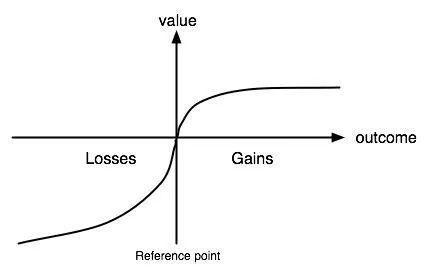
Figure 10: The diminishing marginal utility (right) will be larger than the loss, and its curve will be smoother.

Figure 11: Design core of paid membership system
(1) stored value type
The business model of using this membership form is most common in cinemas, gyms, swimming pools, hot pot restaurants and barbershops. In exchange for membership privileges, the preferential behaviors are all bound with the remaining stored value cards.
For paid members of stored value type, the products shall meet the following requirements:
- Consumers need to pay for services continuously, and the payment can be repeated and long-term.Therefore, stored-value members are difficult to apply to educational products and content products.
- The customer unit price should not be too high, otherwise the threshold of user stored value is too high, and the model cannot be established.For example, it is very common that the customer list of JD.COM 3C is higher than that of 1000 yuan. It is more flexible and efficient to require users to exchange discounts through large stored value, so it is better to split the discounts into the activities and operations of various SKUs.
- The merchant is the service provider, and the pre-storage of cash is the behavior of the user to buy the service provided by the merchant in the future.Example: Wanda Cinema Supreme Card.

Figure 12: Wanda Extreme Card
However, stored-value members also have many disadvantages, such as:
- Users who are sensitive to cash flow are unfriendly, and users prefer to pay only for the preferential part (subscription members are such an idea).
- For users with diverse service needs, they are subjectively unwilling to put a large amount of cash on a single service provider (such as hot pot restaurant), which makes it difficult to break through the bottleneck of conversion rate.
(2) Subscription type
The common Internet paid membership system is mostly subscription type. Among them, content platforms (news, music, video, knowledge, etc.), e-commerce platforms and O2O platforms are the most typical.
- Content platform,The core behavior of users is to consume content rather than services.Subscription is more logical.
- E-commerce platform, the customer unit price is high and the frequency is high. Using the stored value model will repeatedly and massively occupy the cash flow of users, and the experience is poor. Using a subscription member is equivalent to the user exchanging a "15% discount interest+coupon package" at one price.Users still need to spend money to redeem the discount, which can better promote the platform GMV.
- O2O platform (take-out) has low customer unit price and high frequency, and theoretically, it can also adopt stored-value members. However, take-out is still in a state of fierce competition, and the platform still needs a lot of subsidies to users.Therefore, subscribing members with low rates (10 yuan/month) is more conducive to converting more users into paying users and improving the effectiveness of subsidies.
The product strategy of paying members can be developed from four latitudes:
① Diversified membership services
Packaging different types of paid membership products for users with different needs.
Example: Zhihu offers two kinds of paid members, namely "salt election member" and "reading member".
- Salt election members can enjoy 800+ courses and 300+ magazines.
- Reading club can enjoy 600+ audio books and 20000+ e-books.
② User stratification of rights and interests
Provide gradient services for members with different payment levels.
Example: The monthly uploading traffic of free account, standard account, advanced account and professional account are 60M, 1GB, 10GB and 20g respectively.
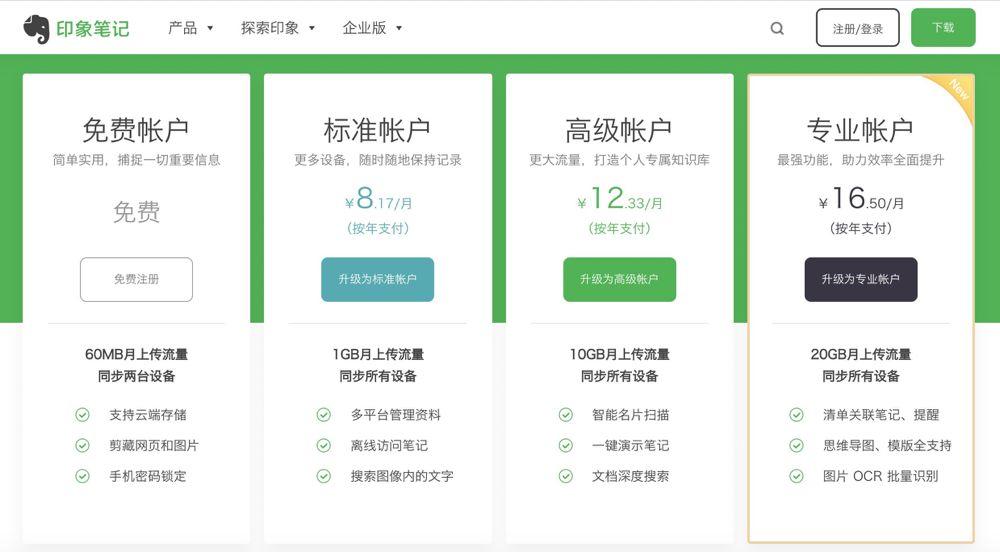
Figure 13: List of paid members of Evernote
③ Price discrimination
(1) First-class price discrimination
If the manufacturer can sell at the highest price that each consumer is willing to pay, it will be the maximum benefit. We call this model "first-class price discrimination".
Example: A bottle of Coca-Cola costs 1 yuan. A is most willing to pay 2 yuan, B is 6 yuan and C is 1.5 yuan.
- If the standard price of 2 yuan is set, A and B will pay 4 yuan together, and C will give up the purchase. The profit of the manufacturer =2*2-1*2=2 yuan.
- If "first-class price discrimination" is implemented, A will price 2 yuan, B will price 6 yuan and C will price 1.5 yuan. Manufacturer’s profit =2+6+1.5-1*3=6.5 yuan.
In real life, "first-class price discrimination" is rare, and some super-large telecom operators will apply first-class price discrimination when dealing with super-large customers.
It is worth mentioning that in 2017, I used a time management product called "Tomato and Potato". At that time, the way to unlock the advanced version was that users set their own prices, and they could unlock it by paying 1 piece, 2 pieces and 100 pieces.
(2) second degree price discrimination
"second degree price discrimination" is also called "interval pricing". Producers set different prices for sale according to different intervals of consumers’ purchase quantity.
Almost all paid members’ products will abide by this rule, and more discounts will be obtained if they buy more monthly services (annual/quarterly) at one time.
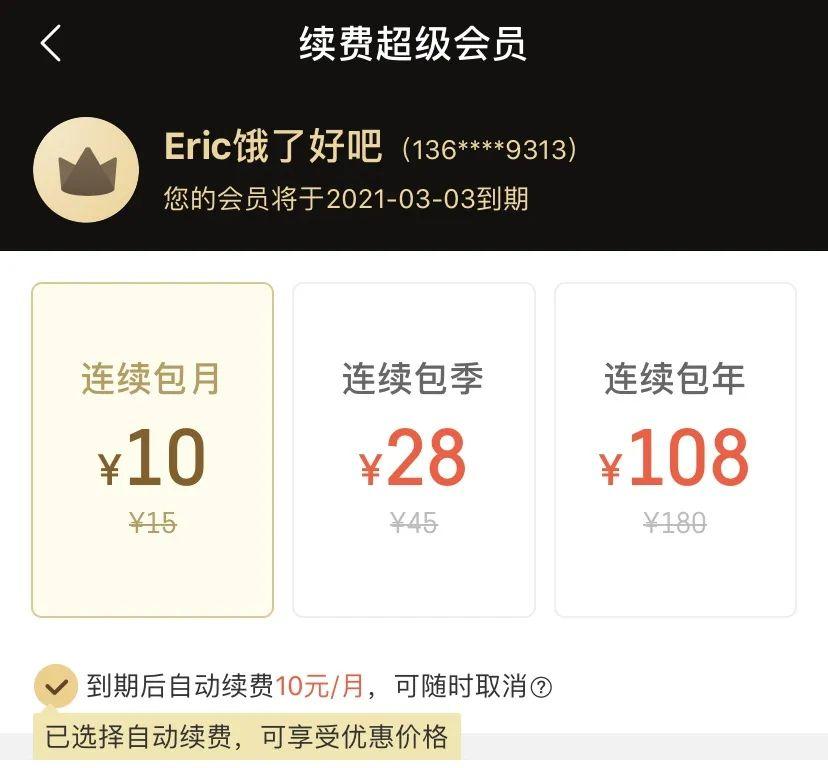
Figure 14: Hungry? svip Ordering Page
(3) Three-level price discrimination
Manufacturers charge different prices for the same product in "different markets" or "different consumer groups", which is "three-level price discrimination"
Simply combed the pricing information of several Internet products paying members, as shown below:
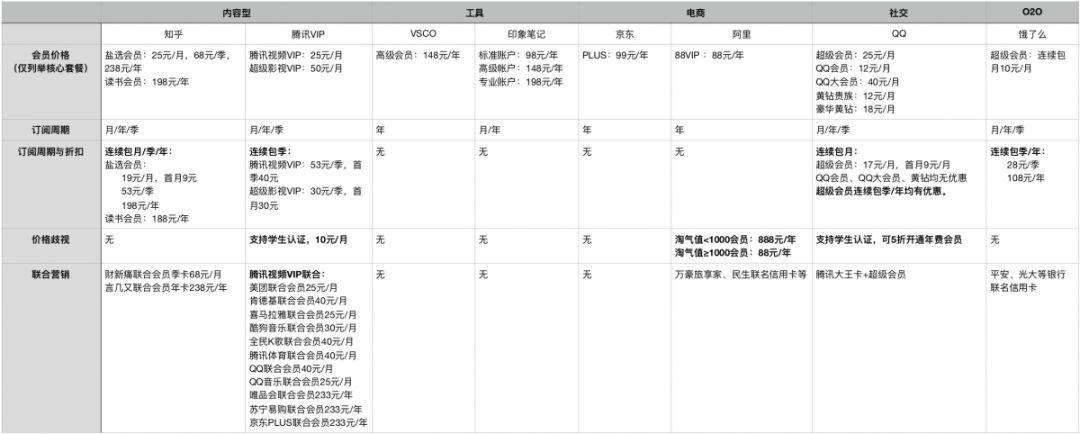
Figure 15: Pricing information of products of paid members such as Zhihu, Tencent and Ali.
You can see:
- Tencent Department, QQ members and Tencent Video all support "student identity authentication" to provide students with lower-priced subscription packages.
- Ali 88VIP has implemented differentiated pricing (≥1000, 88 yuan/year, < 1000,888 yuan/year) for customers with naughty values around 1000.
This is a typical three-level price discrimination.QQ, as the position of young people, if it does not support "student authentication", the total number of subscribed members will be greatly reduced.
(4) Joint marketing
Many paid member products will be co-marketed with other brands. There are two main forms of such co-marketing:
- A joint member who sells in bundles.Example: Caixin and Sanlian Middle School are double members.
- Credit cards issued jointly with banking institutions.Example: Hungry? Ping An co-branded credit card.
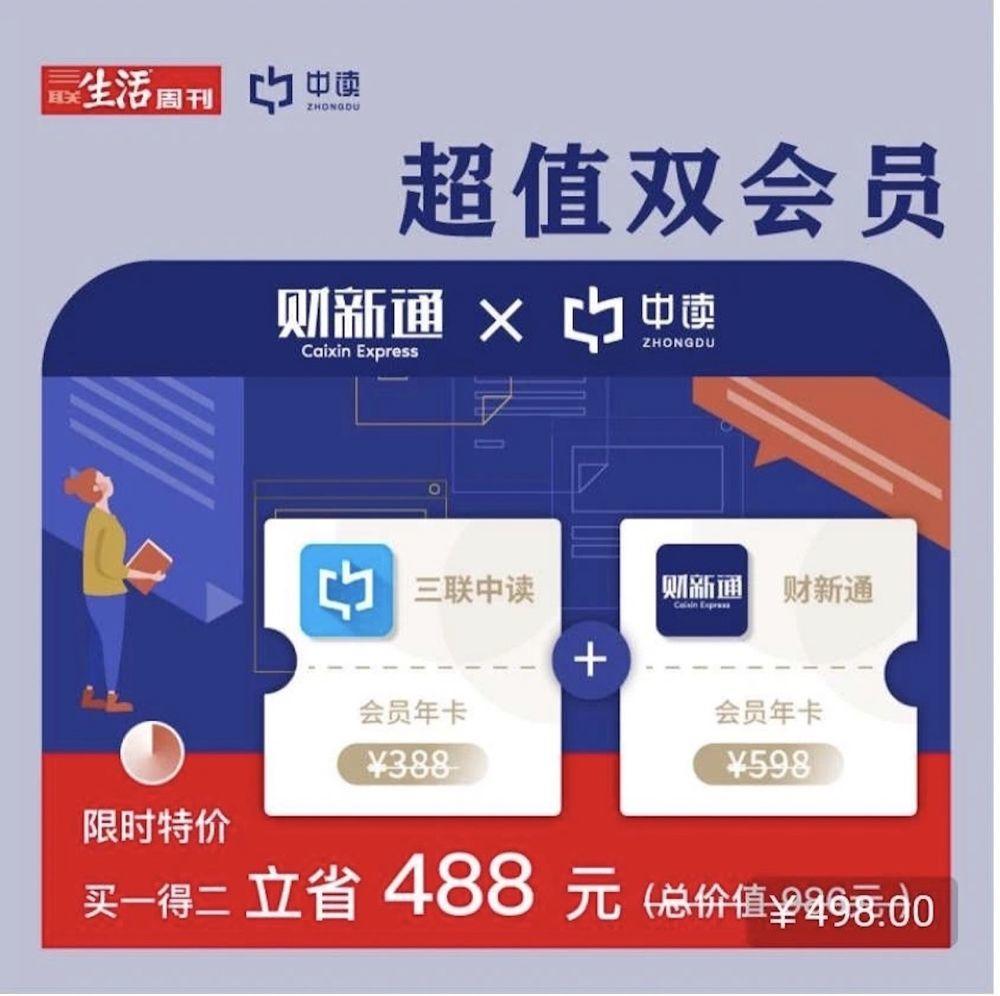
Figure 16: Joint members of Caixin and Sanlian Middle School.
When designing the benefits of paid members, we should focus on two key issues:
- What is the mechanism of equity triggering?
- What preferential/privileged benefits will be provided by the membership system?
① trigger mechanism
There are usually two kinds of rights triggers for paying members:
- Cycle trigger: issue fixed rights and interests to users according to a certain cycle.Example: paid members of Youku send 2~6 movie tickets every month, and some movies need to be redeemed.
- Behavior trigger: trigger rights and interests according to the specific behavior of users.Example: Hungry? Every time svip completes an online payment transaction, it will get a bonus if the order reaches a certain amount. The bonus can be used to deduct the payment.
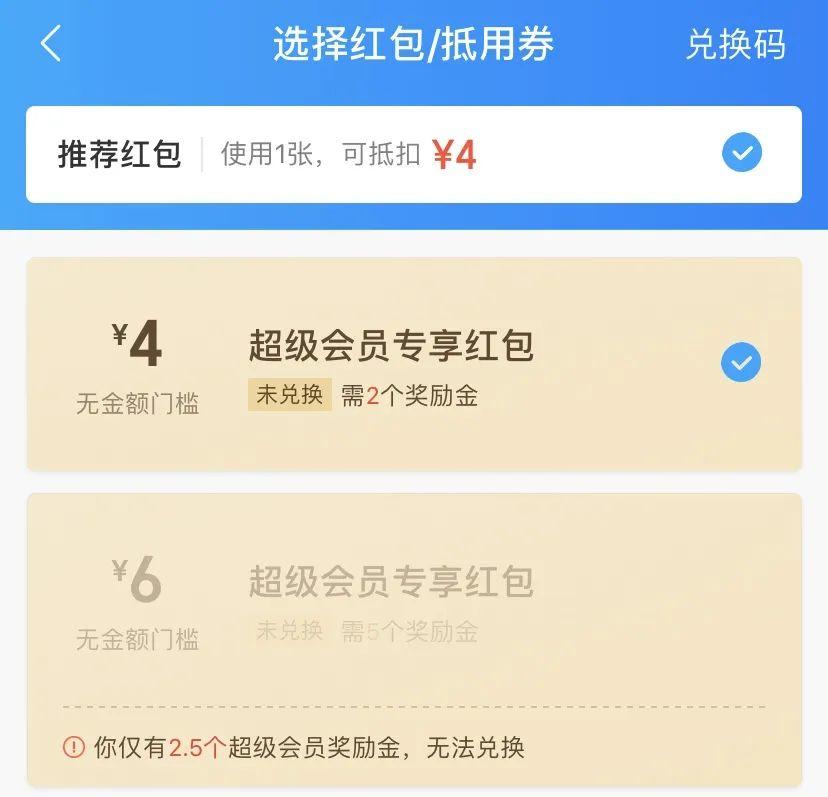
Figure 17: Hungry? Bonus?
② Preferential rights and interests
Preferential rights and interests generally have three forms:
VIP discount: exclusive discount price is implemented for specific goods.
Example: Many products of Tmall offer a 15% discount to 88VIP members.

Figure 18: 15% discount for 18:88VIP
Coupon: Voucher issuance is triggered periodically or by actions.
Example: JD.COM PLUS automatically distributes 100 yuan’s gift money to subscribers at 0: 00 on the 1st of each month, which can be exchanged for "full or reduced coupons" with different amounts.
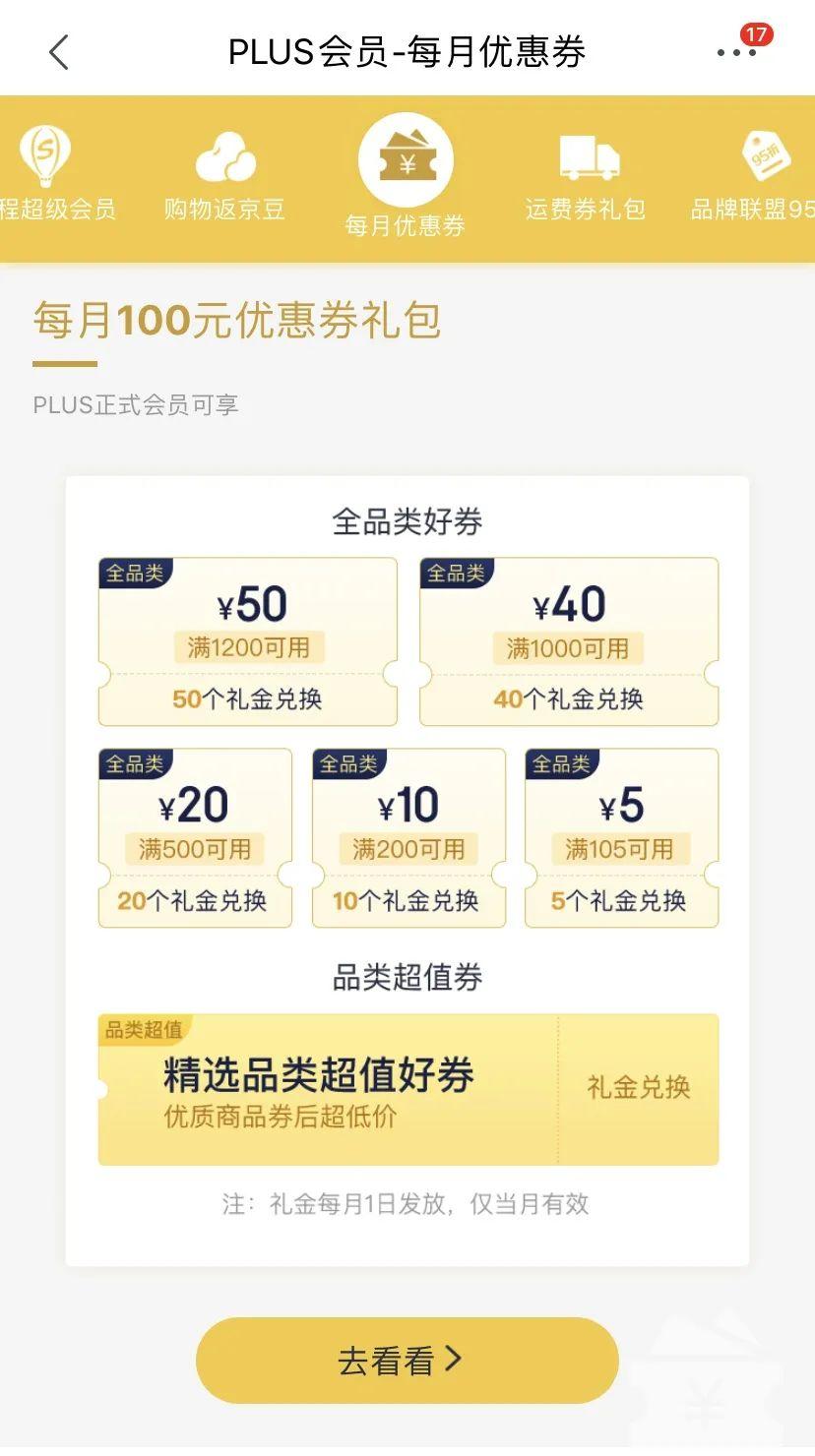
Figure 19: JD.COM PLUS Member Coupon
Multiple rebate: the accumulation of points/experience values at multiple speeds.
Example: JD.COM PLUS members buy 10 times more JD.COM beans.
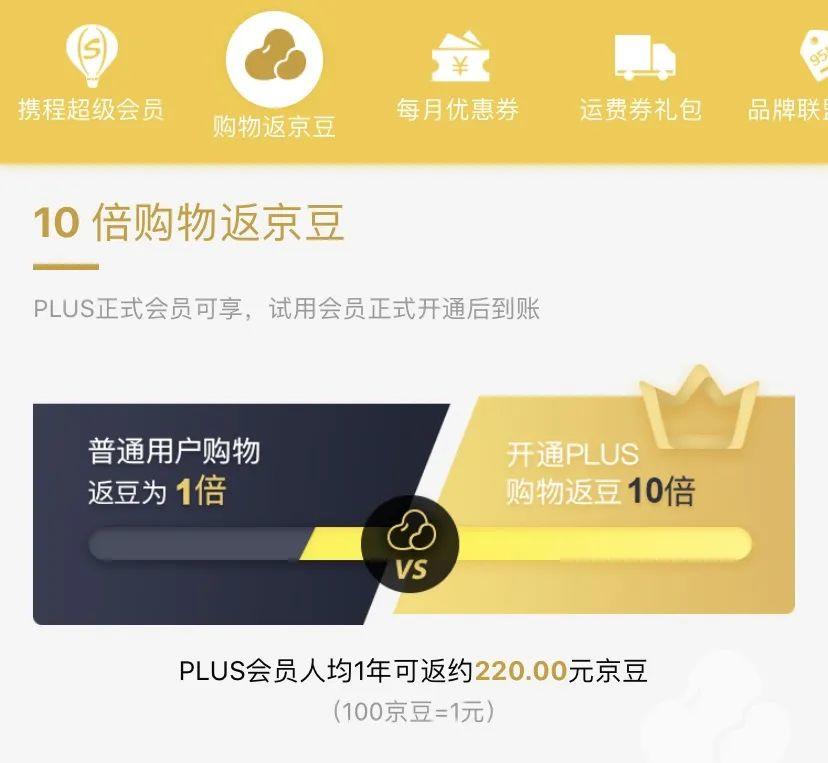
Fig. 20: JD.COM PLUS JD.COM beans
③ Privileged rights and interests
Privileged rights and interests generally have two forms:
The first type: exclusive resources
VIP exclusive content, common in content platforms.

Figure 21: Youku VIP exclusive movie
Members’ exclusive logos and pendants are common in social platforms and communities.
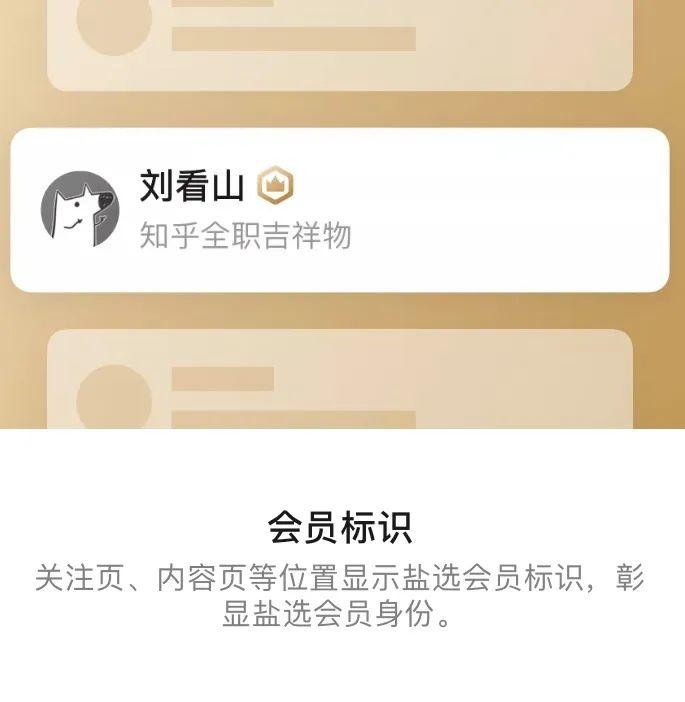
Figure 22: Zhihu Salt Selection members have exclusive crown logo.
VIP exclusive customer service is often used in various membership systems.
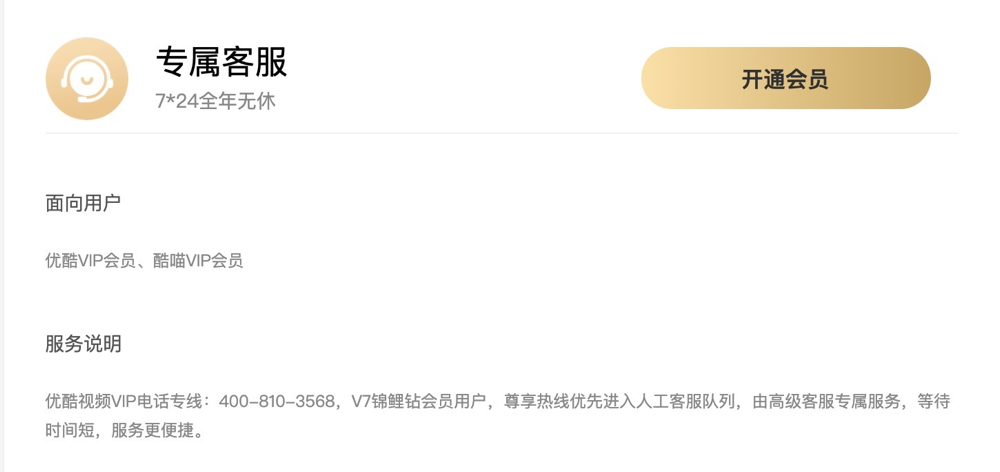
Figure 23: Youku member exclusive customer service
The second kind: behavior privilege.
No advertising experience, common in video platforms.

Figure 24: Youku members have no advertising experience.
Higher freedom of behavior, there are great differences among products. Should be designed around the core interests of users in the product.
- Example 1: Zhihu members can post pictures in the comment area.
- Example 2: Youku members can make an appointment to cache episodes.
- Example 3: Baidu’s network disk svip can speed up downloading resources (of course, it often deliberately limits the speed).
It is worth noting that Baidu’s network disk deliberately limits the speed (especially for iOS and Mac devices), which shows the conflict between its commercial appeal and the basic experience of non-paying users. Using this strategy in the monopoly period can achieve the purpose of realizing cash, but it will have a lot of negative impact on the brand for a long time.
Regarding the operation strategy, this article has two points worth recalling:
- Paying members mainly take advantage of users’ aversion to loss, and users will tend to be active to avoid membership fees becoming sunk costs.
- Users who are willing to subscribe to the service are often active users.
Therefore, in the whole life cycle of paying members, the nodes that need to be focused on are:「Before subscribing: traffic coverage and lowering the threshold」、「In subscription: increasing sunk costs」。
The traffic of paying members comes from "external public traffic" and "internal traffic of products" If you want to grow faster, you should pay attention to two things:
- How should the traffic reaching users be covered?
- How to lower the threshold for paying members?
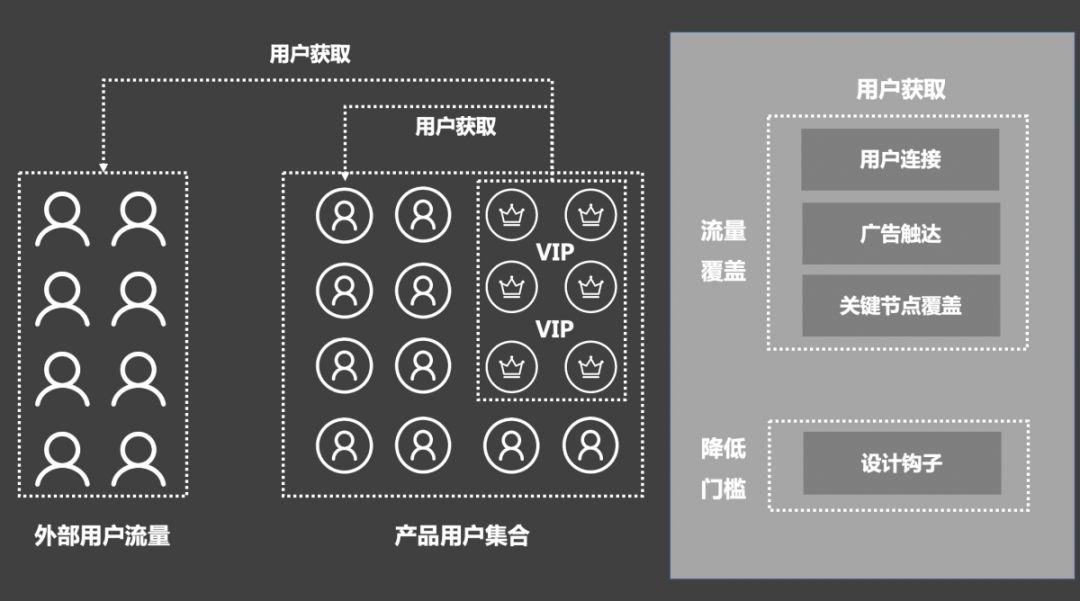
Figure 25: Getting paid members
① Flow coverage
There are three forms to cover users more comprehensively when constraints permit:
- User connection
- Advertising reach
- Key node coverage
1) User connection: guide the connection between paying members and non-paying users to attract users to convert.
The connection methods are:
Resource sharing of paid members
For example, Caixin, as a paid media in the whole network, can share paid articles with a limited number of users through WeChat channel, so that free users can experience the products.

Figure 26: Caixin members share paid articles.
Limited exemption and discount rights sharing.
Example: WeChat reading members can share 3-day free cards with non-members.
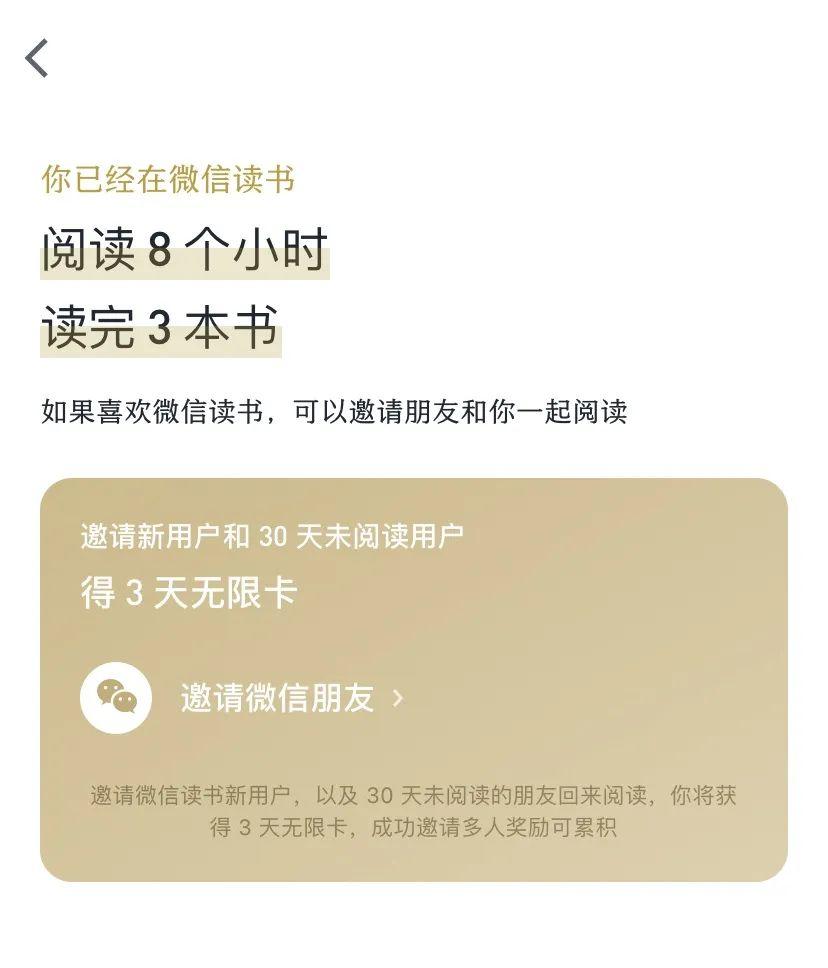
Figure 27: Wechat Reading Invitation Award
Pull a new reward mechanism.
Example: Iqiyi invites one member to receive the 30 yuan at most.

Figure 28: Iqiyi Invitation Award
2) advertising reach: make full use of external advertising resources and internal traffic resources of products to convert paying users, and the operation should pay attention to all channels.ROAS、CPALevel.
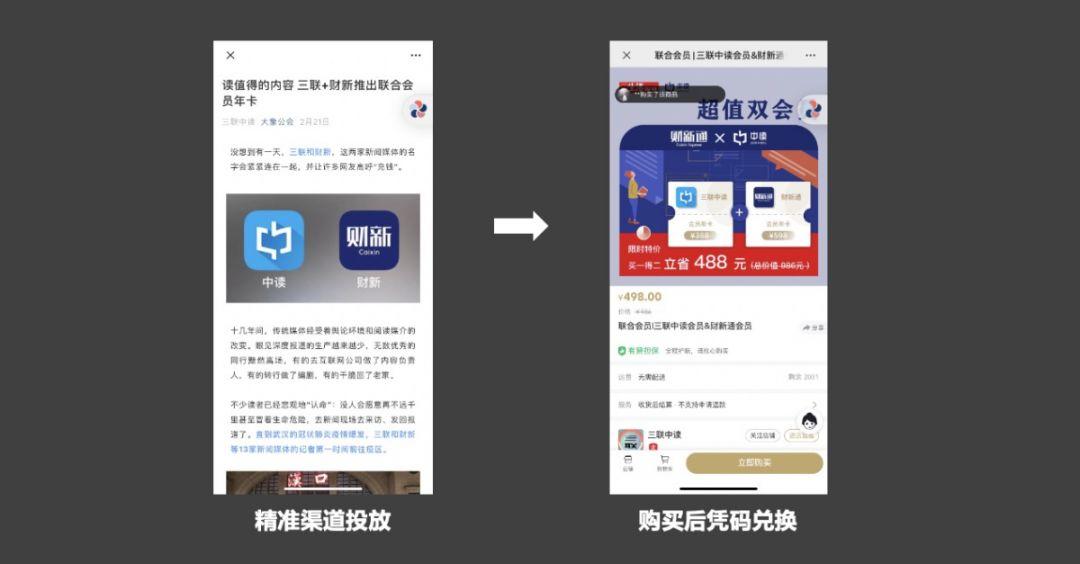
Fig. 29: Caixin * Sanlian Middle School read the advertisement placed in the Elephant Association, reading 1.2W+
Here we should pay attention to the difference between ROAS(Return On Advertising Spend) and ROI(Return on Investment):
- ROAS= total revenue/advertising expenditure * 100%.
- ROI= (total revenue-cost input)/cost input * 100%; Cost input includes service cost and advertising cost.
If it is a content-based membership product, the marginal cost is very low, and ROAS is a more suitable evaluation index than ROI. If it is an e-commerce member product, the user’s income will only be reflected in a long period of time, and CPA can be used to evaluate the delivery effect in the early stage.
3) Coverage of key nodes: In addition to advertising resources, the most frequent way to influence users is to guide users to transform at key nodes of products.
Example 1: Tencent video guides users to apply for membership and advertise before showing advertisements. Example 2: Meituan take-out guides users to recharge their members on the order settlement page, saving more.
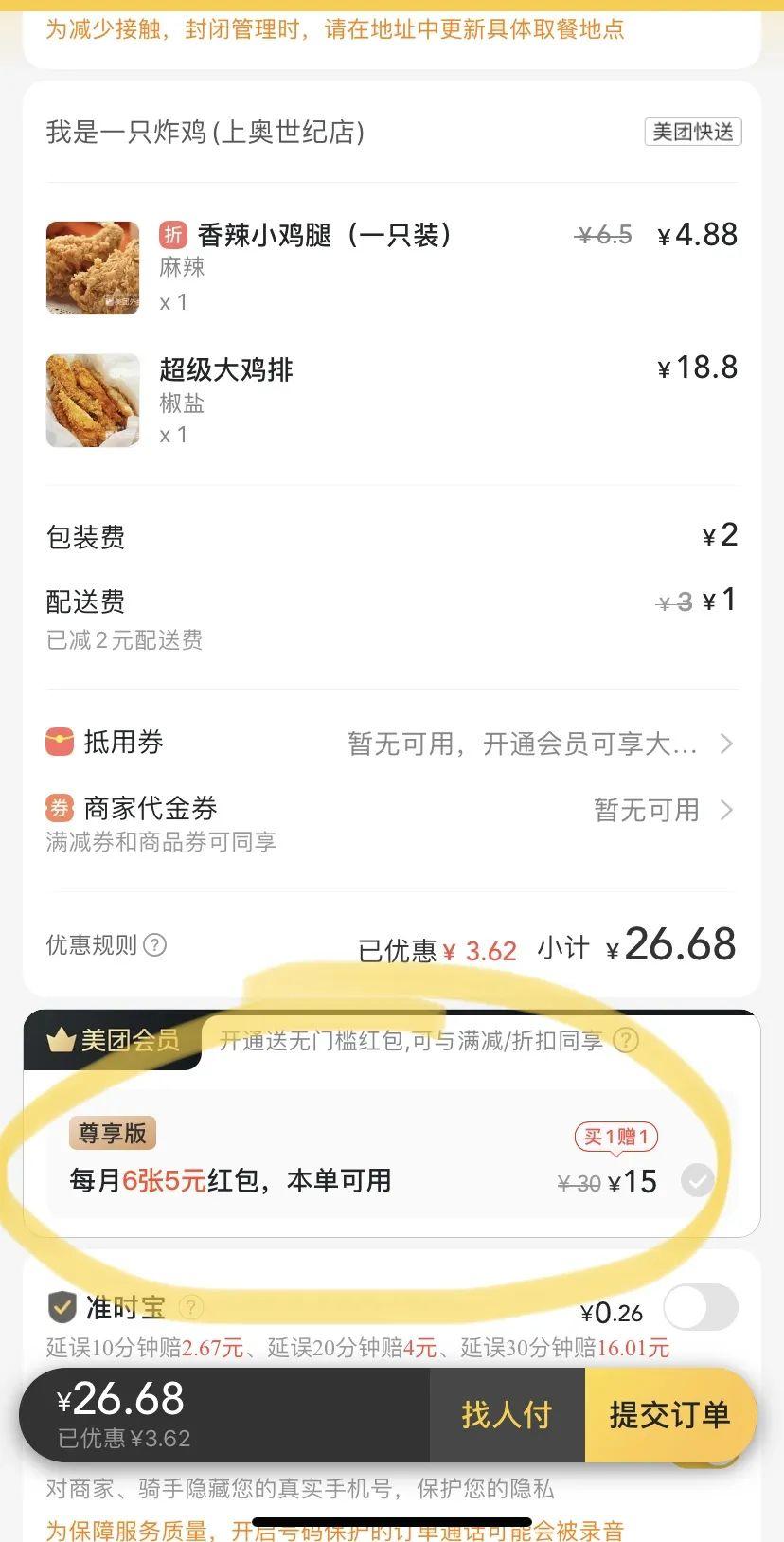
Figure 30: Meituan Takeaway Settlement Page
② lowering the threshold
The core of users’ decision on paying members lies in the relationship between the required rights and prices, and their awareness of the utility of rights and interests will be quite different before and after use, so designing strategies that are more conducive to lowering the user’s decision-making threshold can more effectively promote users’ decision-making and payment.
Design hooks:
The common hooks in paying members to guide users to pay fees are generally "first month/first quarter subscription discount, subscription gift" and so on.In addition, we can also try to design a more effective scheme according to the specific situation of the product.
Take Trello, a team collaboration product, as a product with a certain threshold, Trello is not eager to guide new users to pay, but adopts the strategy of giving away one month’s membership for every registered user invited (up to 12 months), urging team organizers to introduce team members, and carrying out project management and coordination in Trello. After more members join, users face two problems:
- The complexity of the project has become higher, and members’ integrated plug-ins are needed to improve efficiency (for example, burn-out diagram, automated process).
- Switching to other platforms is expensive because dozens of colleagues need to re-adapt.

Figure 31: How 31:Trello hooked users.
Trello’s paid conversion strategy is a good reference for products whose user behavior can precipitate and raise the switching cost.
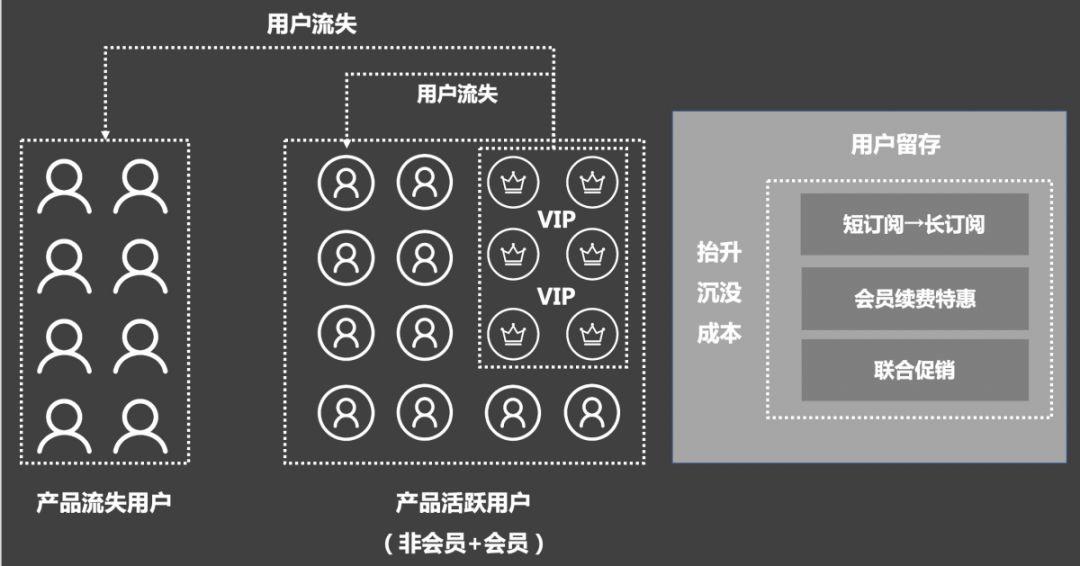
Figure 32: Raising sunk costs
Generally speaking, the greater the amount of payment, the stronger the impact of users’ aversion to loss, so the best way to raise the sunk cost of users is:
① Short Subscription → Long Subscription
Some paying members will generally order a trial on a monthly basis out of the mentality of trying; The retained users (recognized product value) among these users can be promoted to "long-subscription users" through annual promotion, so as to further improve the retention level of paying members.

Figure 33: Marketing advertisement of Evernote to monthly paying members
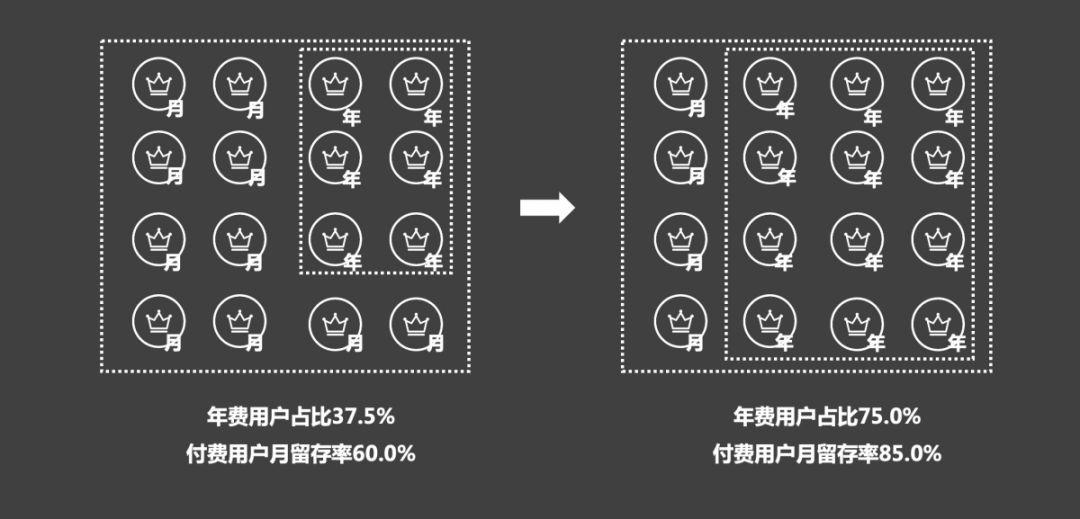
Figure 34: The positive impact of expanding the proportion of annual fee users on retention
② Special offer for renewal of membership fee.
For annual fee members, renewal privileges (coupons, limited-time discounts, continuous annual subscription privileges, etc.) can be triggered for users whose expiration date is approaching, so as to improve the subscription retention rate of users.
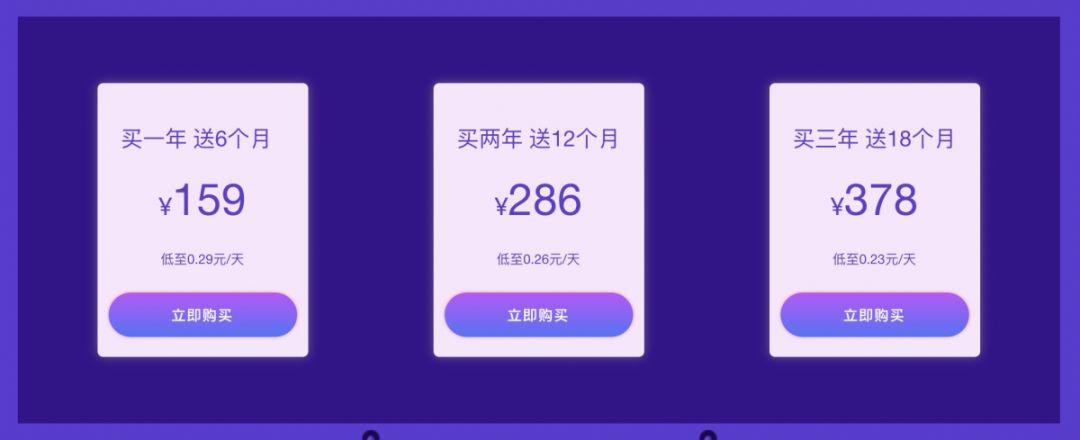
Figure 35: Process On Subscription Special
③ Joint promotion
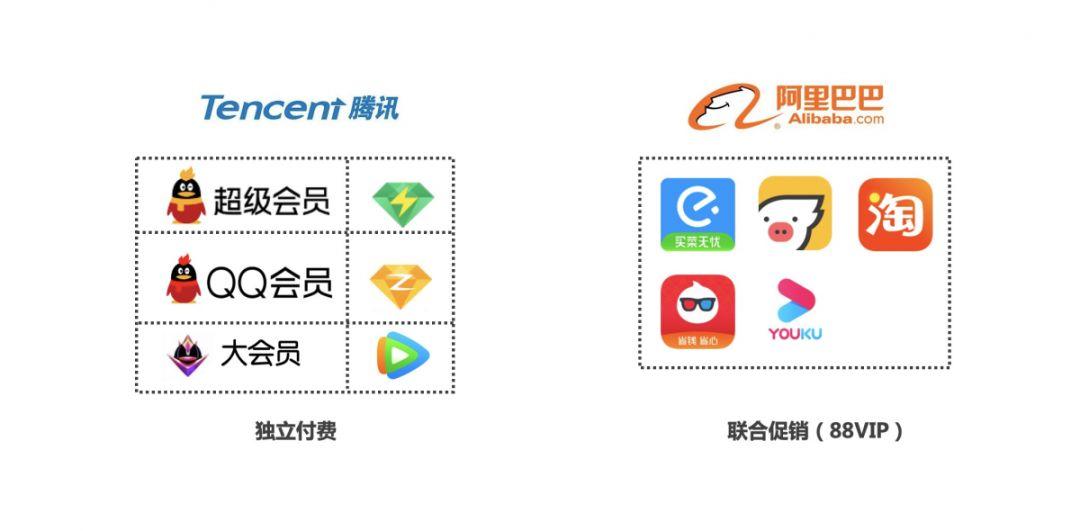
Figure 36: Independent Payment and Joint Promotion
As mentioned at the beginning of this article, under the independent membership system, users can choose the most suitable manufacturers in various fields to order, such as music subscription to Netease Cloud Music and video subscription to Tencent.However, when there is a high degree of user overlap between services, cost-effective joint marketing is more helpful to exclusively encircle paying users (I immediately unsubscribe from Tencent Video and Meituan Takeaway members after subscribing to 88VIP), and through high-frequency services.Precipitate their user habits and brand recognition..
Of course, the price of high cost performance is blood loss.
"To be a member, Ali needs to post money inside."
—— Xiu Xun, the project leader of ——88VIP members.
Didi Chuxing is a typical high-frequency and low-consumption product, and its core business behavior is relatively simple, which is suitable for implementing the paid membership system.
① orange long member and green orange member
At present, Didi uses the "growth membership system" in the four-wheeled vehicle system, focusing on subsidizing highly active users (above the diamond level).
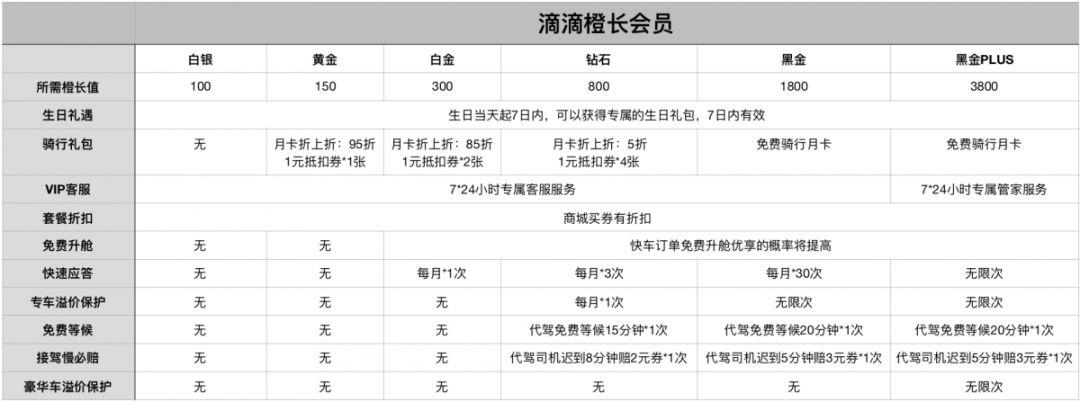
Figure 37: Didi Orange Long Membership System
At the beginning of this paper, it is also mentioned that because "growth member" is a global operating system, it is difficult to support a high subsidy strategy for a large number of users.
Among the 11 rights and interests of the orange long system, those that can make users feel should be:
- "Quick response" of express/special train. At the peak of transportation capacity, priority can be given to ensuring the emergence experience of high-activity users.
- The green orange is discounted and free to ride the monthly card, but you need to go to the rights details page to get it. The entrance is too deep and most users may not know it.
We have also seen many times being ridiculed:
- Exclusive customer service: Black Gold PLUS is the exclusive customer service of 7*24, and Black Gold PLUS has become the exclusive butler of 7*24 (? ? ? )
At the same time, Didi has been set up separately in the two-wheeled vehicle system:
- "Growing membership system" (green orange level)
- "paid membership system" (cycling monthly card)
The rights and interests of gradient design around two-wheeled vehicle scenes.
At present, the grade of green orange is open to LV30, and the rights and interests are mainly composed of "experience acceleration", "drawing red envelopes or bicycle tickets when you are hungry" and "dispatching fee reduction".
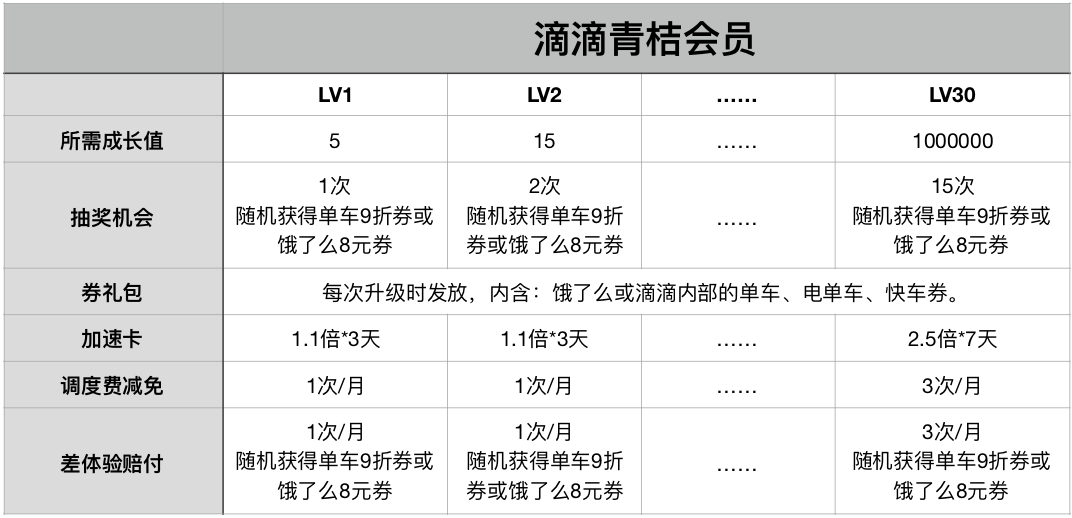
Figure 38: Didi Qingju membership system
The green orange cycling card mainly promotes the continuous monthly discount (16.8 yuan/month, 9.8 yuan in the first month), and the 5 yuan is deducted at most for each ride, and the excess is charged according to the standard, with a maximum discount of 20 times a day. The card belongs to a member product that pays for preferential rights.
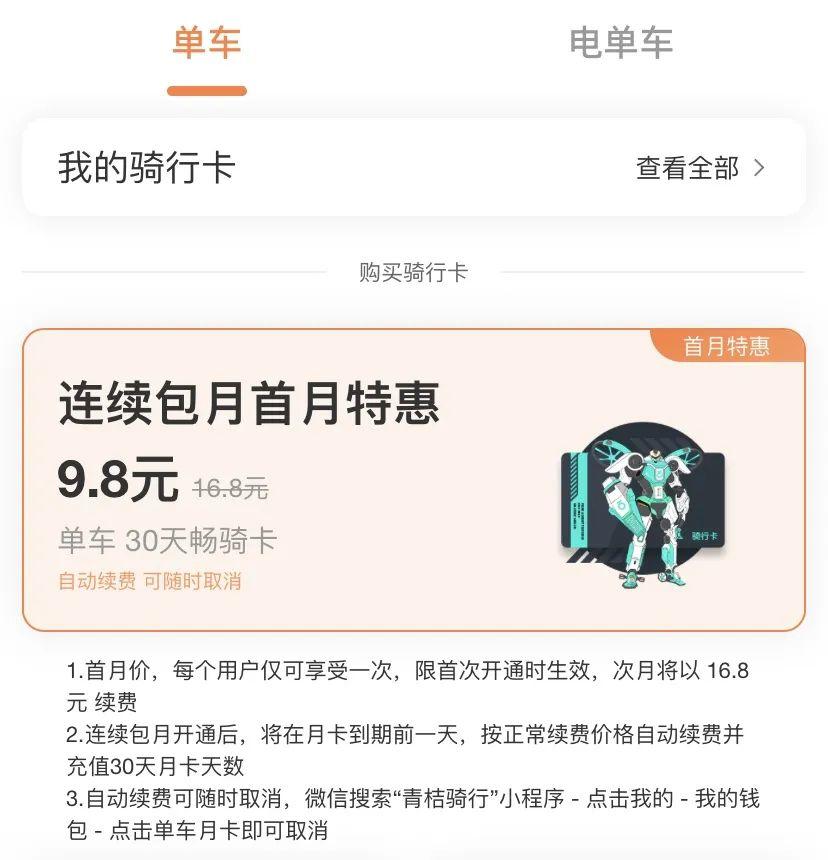
Figure 39: Didi Qingju Cycling Card
② coupon shopping mall
Didi is also selling various types of travel packages to provide high-frequency users with money-saving solutions, such as:
- 15 yuan buys 5 yuan *6 express ticket (limit: 9: 00 ~21: 00, non-carpooling, valid for 7 days)
- 15 yuan buys 20% discount *5 express ticket (limit: 10: 00 ~22: 00, valid for 7 days).

Figure 40: Didi Express Package
However, because the purchase entrance of coupons is located in the advertising area below the home page, the conversion rate may not be high.
(1) the necessity of fantasy.
Although it has considerable scale effect, instant travel relies heavily on the response ability of the supplier. If it cannot respond in a short time, the order will easily be lost to other platforms.「Paid membership systemIt can enhance the active will of users to a certain extent, and in the case of limited supply, it is more conducive to allocating resources to high-value users and improving platform revenue.
In June 2019, LatePost learned from many sources that the daily order volume of taxi service in Gaode has exceeded 4 million, and the revenue per order is 1.5-2.5 yuan.
On the premise of ensuring the basic user experience, some efficient rights/operation modes are more suitable to be integrated into the "paid membership system":
- High-utility rights such as quick response, free upgrade and premium protection are subject to cost pressure in the free growth system, and it is difficult to release them on a large scale.
- Travel packages are sold through advertising space, which has a transformation bottleneck and requires users to purchase them repeatedly, so the experience is insufficient.
② The delusion of coupling or decoupling.
From the perspective of user coverage, green orange users should be a Didi user with a high probability, but Didi users are probably not green orange users (business in development period).So if you want to design a paid membership system:
- The independence of green orange membership system should be maintained, which is convenient for green orange to change its operation strategy quickly in the development stage.
- The paid membership system mainly focuses on the four-wheeled vehicle business and replaces the current orange long membership system.
(3) the delusion of membership rights.

Figure 41: Benefits of Orange Gift Members
This is a paid membership product called "Orange Gift Member":
- Order only "Orange Gift Member": 28 yuan/month, and 15 yuan only for the first month of the month.
- Buy the "Green Orange Cycling Month Card", 38 yuan/month, and only 15 yuan for the first month in a row.
Note: the data in this paragraph are all nonsense, just for indication.
The core rights and interests of orange gift members are:
Bonus system:You can get a bonus for each order, and the accumulated bonus can be redeemed for coupons on the payment page of the next car use or at the member center. It is estimated that only the express fare can save 500~1000 yuan a year.

Figure 42: bonus exchange
- Free upgrade:The probability of free upgrade is 20 times higher than that of ordinary users.
- Quick response:Express trains and special cars can use the quick response rights for 60 times during the monthly peak period.
- Premium protection:The price increase during the peak period will be borne by the platform, with express trains twice a week and unlimited special buses.
- VIP customer service:Exclusive VIP butler service, feedback and suggestions will be given priority.
- Accident insurance:Give away accident insurance worth 1 million.
The financial calculation of pricing and rights and interests needs to be comprehensively calculated according to the profitability of the business in different scenarios and the probability distribution of user behavior. For example:
- Under a certain pricing scheme, the express consumption of about 45 times/month will make the members’ income negative, but less than 18% of the subscribed members can meet the standard, so the scheme is feasible.
- Pricing strategy, billing strategy and simultaneous calling will focus on the ROI level of paying members.
The full text is over, thank you for reading here.
References:
Negative interest rate loan: Starbucks’ monetary miracle, Wisburg, Zhibao, 2019; Risk aversion and loss aversion are not the same thing at all, Zhihu ID: Meng Xiaomeng, 2017;
Thinking Fast and Slow, Daniel Kahneman, 2012.
Author: a maverick Eric;; WeChat official account: A maverick Eric.
This article was originally published by a maverick Eric @ Everyone is a product manager. Reprinting is prohibited without permission.
The title map comes from Unsplash and is based on CC0 protocol.

